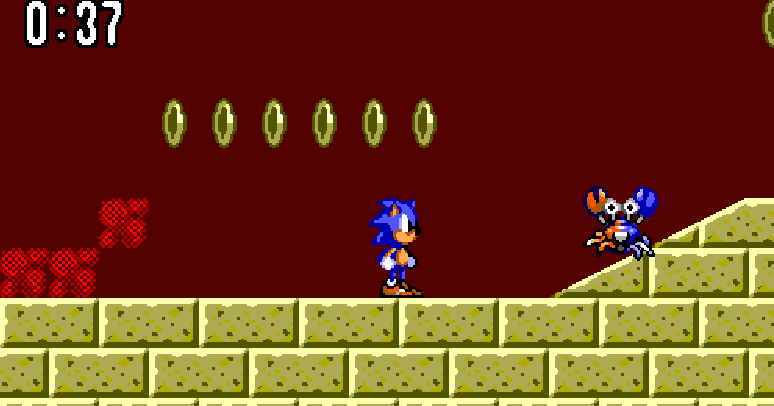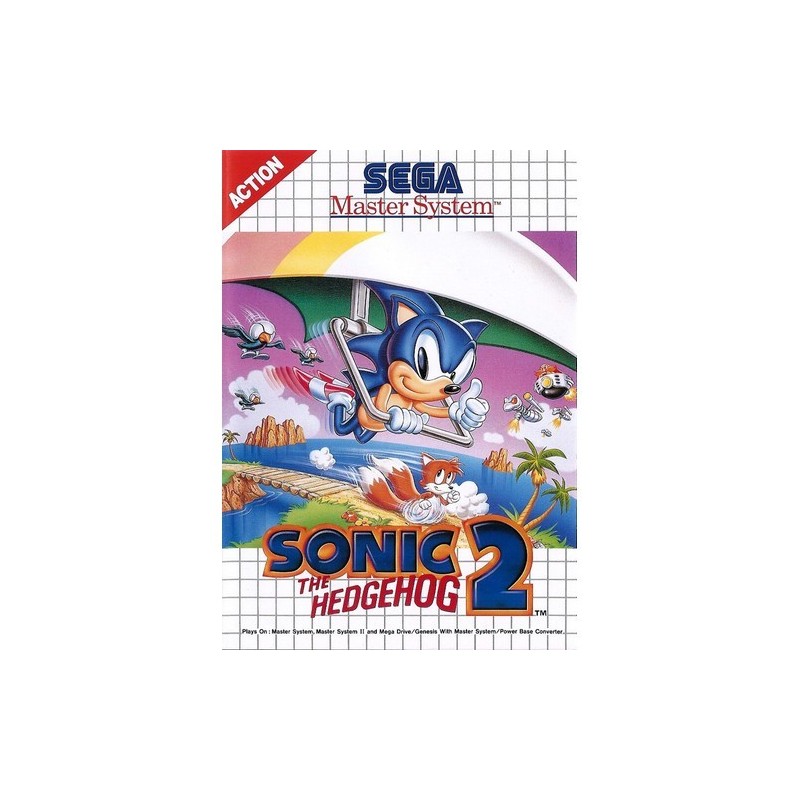
In addition to all of this, the music in the game successfully captures the catchiness of the Genesis tunes. These three levels alone make playing the 8-bit version of Sonic the Hedgehog worthwhile, even if you have played the 16-bit version countless times before. Taking a leaf out of Super Mario Bros 3, Sky Base Zone acts as the lead up to the final boss and sees Sonic infiltrating Dr. Jungle Zone comes afterwards, with Sonic traversing across deadly rivers and sliding down vines as he races through this colourful utopia. This zone has a particularly strong focus on platforming, with the second act seeing our hero traverse up a large waterfall as the screen scrolls vertically. Sonic must navigate over rushing water, making use of springs and see-saws to chase after his nemesis, Dr. These catered to the older hardware, but also gave a reason for gamers to pick up both titles and allowed the developers some creative freedom.īridge Zone, a level with similar appearance to Green Hill, replaces Marble Zone. While the Master System version of Sonic does share certain stages with its 16-bit cousin (such as Green Hill Zone, Labyrinth Zone and Scrap Brain Zone), several new environments were created. It sounds simple, as they’re literally just placed on the ground for players to grab, but you’ll have to put your exploration and platforming skills to good use if you’re to find them all. Instead, six of Sonic’s precious trinkets are hidden throughout all of the Zones included in the game.


Bonus levels can still be accessed by finishing each stage with 50 rings or more, but they now no longer house Chaos Emeralds. This was most likely due to the limited memory and colour palette of the Master System.ĭon’t be mislead though, the enemies are still deadly, and one hit will send Sonic flying backwards, dropping all of his golden power rings. Enemy sprites, although familiar, are much smaller in size.
Sonic the hedgehog 2 master system tv#
Rather than star posts, checkpoints are instead represented by TV monitors with a downwards pointing arrow on the front. This certainly isn’t a bad thing though, as the tight controls and simple, yet unique platform puzzles make it a very enjoyable experience. Don’t you wave that finger at me, young man.Īs mentioned previously, the gameplay in Sonic the Hedgehog on Master System is geared more towards platforming than speed. All, of course, within the limitations of the Master System hardware. Everything Sonic had become famous for was here: abstract environments, colourful graphics and his trademark speed. Sonic the Hedgehog was released in October of 1991 and was worth the wait. Master System owners had to wait an excruciating four months until they could finally get to experience what every kid in the playground always had on their minds. The first Sonic game for the SEGA Genesis was released in June 1991. Let’s take a look back at the three mainline Sonic titles created for the Master System and appreciate how creative the very small development teams had to be to bring Sonic into the world of 8-bit. Instead, the development team chose to focus more on the platforming aspect, with unique and varied locations created especially for the Master System. Creating the sense of speed found in the 16-bit versions with a far slower processor speed and to produce graphics as pretty with such a limited colour palette was next to impossible.

Replicating Sonic’s unprecedented speed and colourful graphics on 8-bit hardware was not to be an easy task. SEGA set to work assembling a small group of people who’s sole purpose was to make this happen.
Sonic the hedgehog 2 master system install#
SEGA’s 8-bit console, the Master System, already had a rich install base, and it was no-brainier to bring Sonic to the many fans who were still yet to jump ship. He was even featured as a huge balloon in a 1993 Thanksgiving Day parade and starred in official music videos! Looking back, it’s clear that everyone wanted a piece of SEGA’s newest star.Īs with every new generation of consoles, the 16-bit systems of yesteryear were not cheap at launch. Sonic single handedly helped SEGA overtake the mighty Nintendo in terms of console sales for a good period of time. His cocky attitude, tremendous speed and colourful game world went down a storm with gamers. Sonic was the “killer app” for the 16-bit Genesis/Mega Drive system back in the early ’90s. The super-fast, spiky-blue hedgehog has been sitting atop of the SEGA throne as mascot ever since he kicked Alex Kidd off it way back in 1991.


 0 kommentar(er)
0 kommentar(er)
